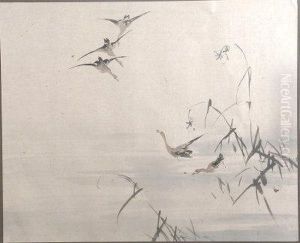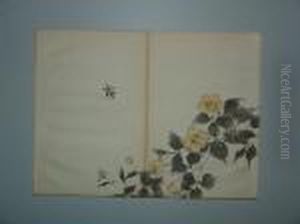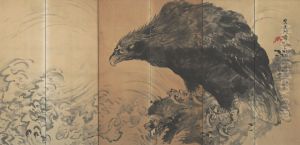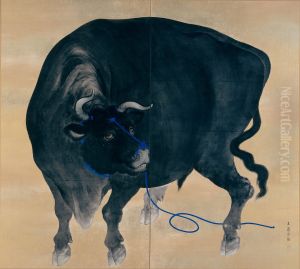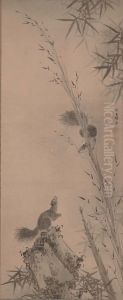Mochizuki Gyokusen Paintings
Mochizuki Gyokusen was a distinguished Japanese artist, born in 1834 and passing away in 1913. His life spanned an era of significant transformation in Japan, from the late Edo period through the Meiji Restoration, a period that saw Japan transitioning from feudalism to a modern state. Gyokusen was deeply involved in the Nanga (Southern Painting) movement, a school of Japanese painting that sought inspiration from Chinese literati painting traditions. This movement emphasized subjects from nature, such as landscapes, flowers, and birds, rendered in a style that was both expressive and deeply rooted in a scholarly tradition.
Gyokusen's work is characterized by its delicate brushwork and subtle use of ink, capturing the essence of his subjects with a minimalist approach. His landscapes are particularly noted for their serene beauty and philosophical depth, reflecting the artist's engagement with Confucian and Taoist thought, which were integral to the Nanga ideology. Despite the rapid modernization and Westernization of Japan during his lifetime, Gyokusen remained committed to the traditional aesthetics and techniques of East Asian art, contributing significantly to the preservation and continuation of these practices through a period of drastic cultural change.
In addition to his painting, Gyokusen was also known for his poetry and calligraphy, making him a well-rounded literati scholar, embodying the ideal of the Nanga movement's pursuit of scholarly and artistic excellence. His works were highly esteemed by his contemporaries and continue to be celebrated for their elegance and depth. Through his art, Gyokusen contributed to a dialogue between the past and the present, offering a window into the contemplative, nature-centric worldview of East Asian literati culture amidst the backdrop of a rapidly modernizing world. His legacy is preserved in various collections both within Japan and internationally, where his works are studied and admired for their historical significance and aesthetic beauty.
